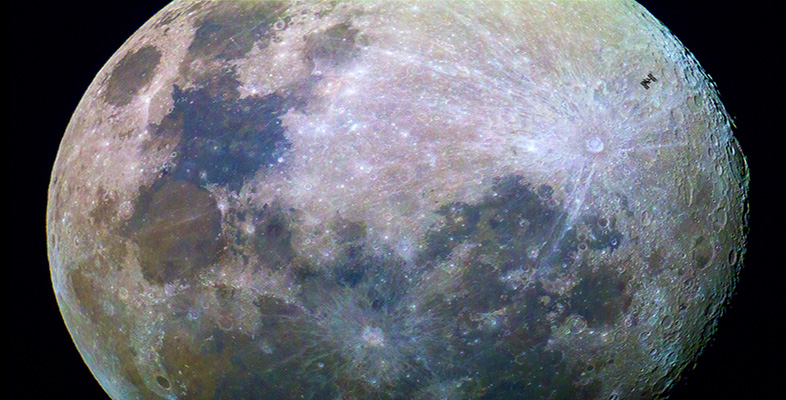2 Studying the set text: Chapter 6 of Teach Yourself Planets
2.1 The Moon
David A. Rothery Teach Yourself Planets, Chapter 6, pp. 66-75, Hodder Education, 2000, 2003.
Copyright © David Rothery
In this chapter you will learn:
about the nearest planetary body to the Earth
about the long record of impact cratering on its surface, and about the ancient eruptions that flooded many low-lying areas.
| Planetary facts | |
|---|---|
| Equatorial radius (km) | 1738 |
| Mass (relative to Earth) | 0.0123 (7.35 × 1022 kg) |
| Density (g/cm3) | 3.34 |
| Surface gravity (relative to Earth) | 0.17 |
| Rotation period | 27.32 days |
| Axial inclination | 6.67° |
| Distance from Earth | 384,400 km |
| Orbital period | 27.32 days |
| Orbital eccentricity | 0.05 |
| Composition of surface | rocky |
| Mean surface temperature | 1 °C |
| Composition of atmosphere | argon, helium, atomic oxygen, sodium, potassium |
| Atmospheric pressure at surface (relative to Earth) | 2 × 10−14 |
| Number of satellites | 0 |
David A. Rothery, Teach Yourself Planets, p. 66, Hodder Education, 2000, 2003. Copyright © David Rothery
